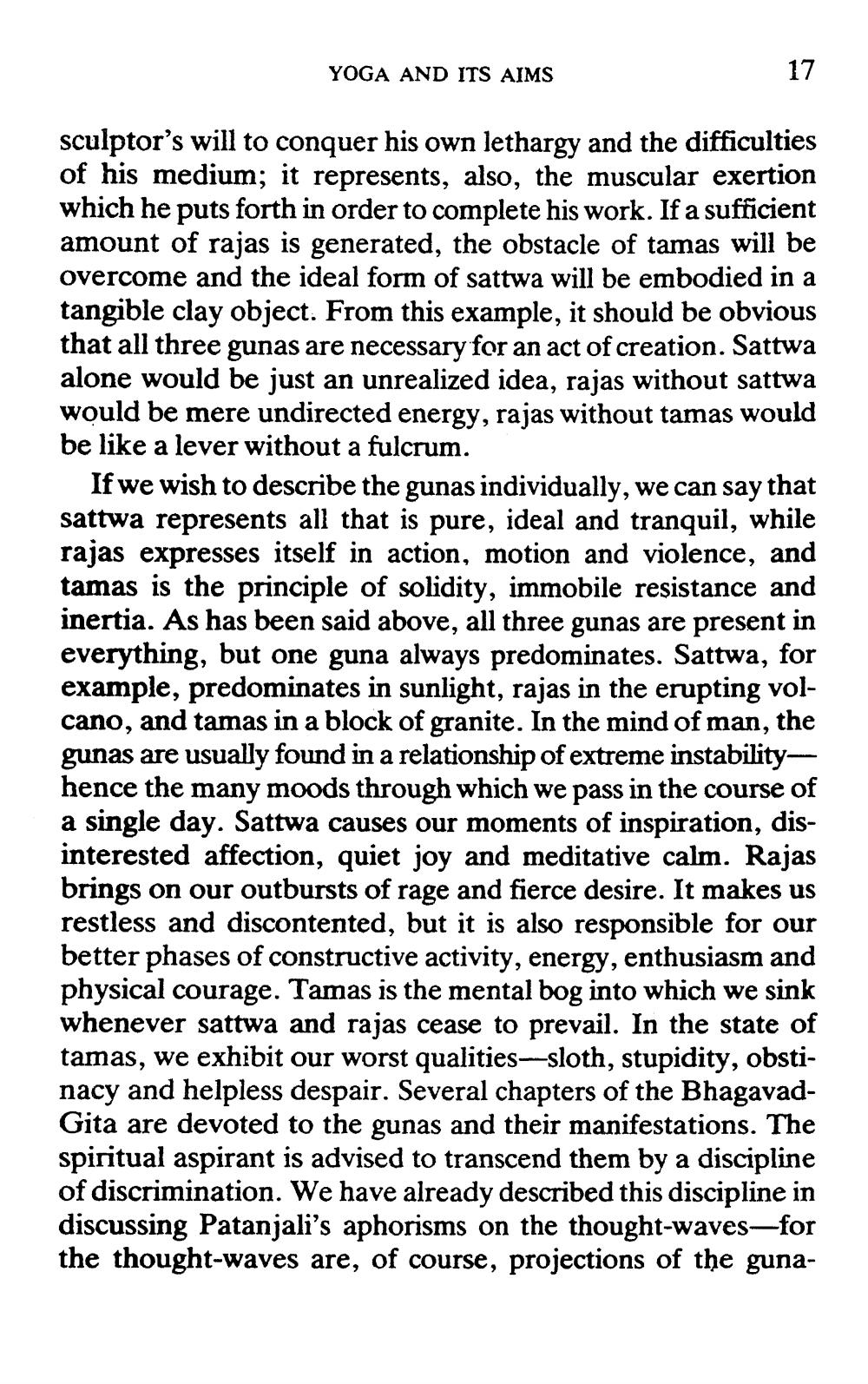________________
YOGA AND ITS AIMS
17
sculptor's will to conquer his own lethargy and the difficulties of his medium; it represents, also, the muscular exertion which he puts forth in order to complete his work. If a sufficient amount of rajas is generated, the obstacle of tamas will be overcome and the ideal form of sattwa will be embodied in a tangible clay object. From this example, it should be obvious that all three gunas are necessary for an act of creation. Sattwa alone would be just an unrealized idea, rajas without sattwa would be mere undirected energy, rajas without tamas would be like a lever without a fulcrum.
If we wish to describe the gunas individually, we can say that sattwa represents all that is pure, ideal and tranquil, while rajas expresses itself in action, motion and violence, and tamas is the principle of solidity, immobile resistance and inertia. As has been said above, all three gunas are present in everything, but one guna always predominates. Sattwa, for example, predominates in sunlight, rajas in the erupting volcano, and tamas in a block of granite. In the mind of man, the gunas are usually found in a relationship of extreme instabilityhence the many moods through which we pass in the course of a single day. Sattwa causes our moments of inspiration, disinterested affection, quiet joy and meditative calm. Rajas brings on our outbursts of rage and fierce desire. It makes us restless and discontented, but it is also responsible for our better phases of constructive activity, energy, enthusiasm and physical courage. Tamas is the mental bog into which we sink whenever sattwa and rajas cease to prevail. In the state of tamas, we exhibit our worst qualities-sloth, stupidity, obstinacy and helpless despair. Several chapters of the BhagavadGita are devoted to the gunas and their manifestations. The spiritual aspirant is advised to transcend them by a discipline of discrimination. We have already described this discipline in discussing Patanjali's aphorisms on the thought-waves—for the thought-waves are, of course, projections of the guna




